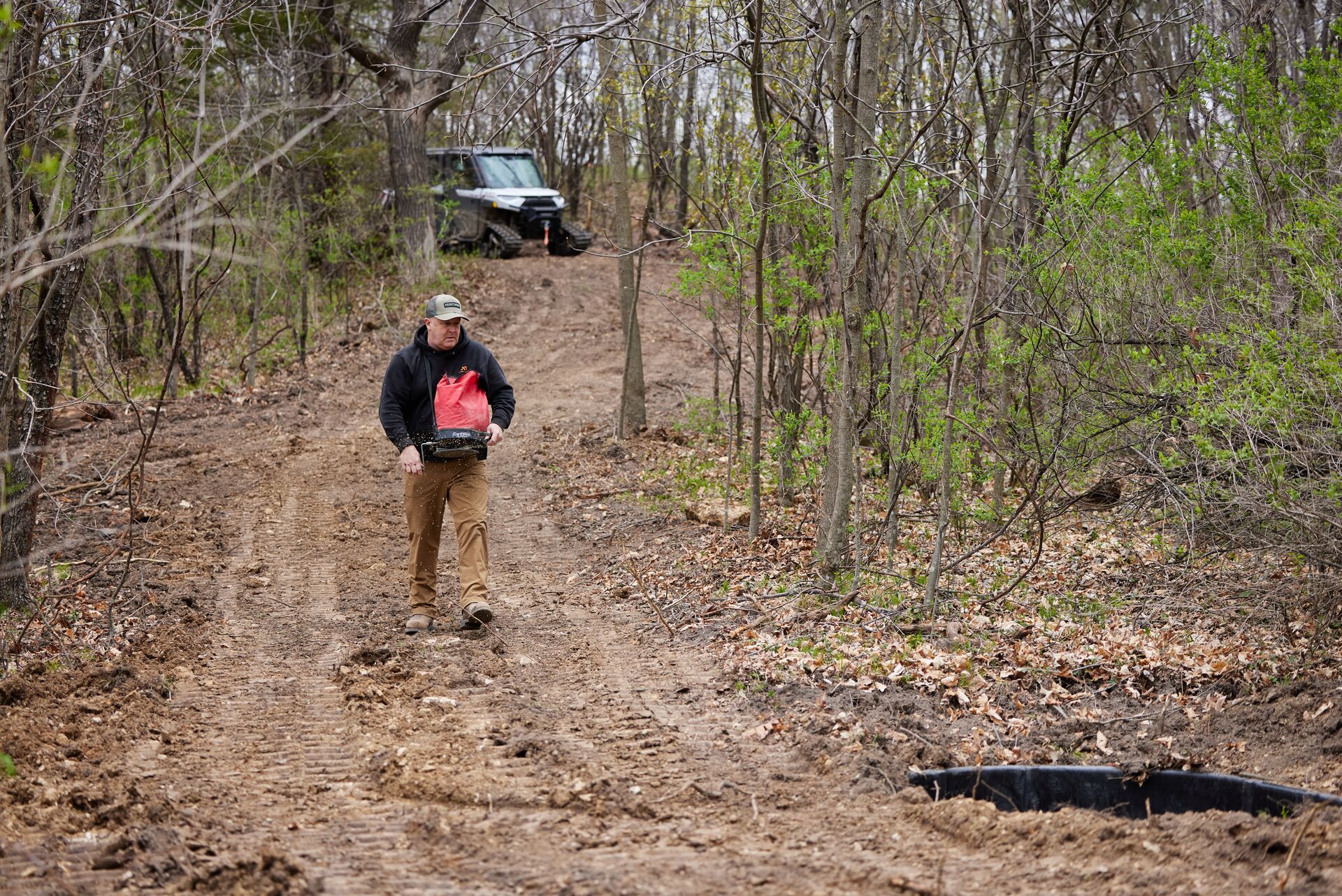Do you plan your deer hunts around the moon’s phases? If so, you might want to reconsider that strategy – or think about other factors that could impact deer movement more than how high the moon is in the sky.
While the moon’s phases were once considered significant in determining the timing of the rut and how deer move throughout the day, our friend, deer habitat and food plot expert, and HuntWise partner Jeff Sturgis could change your mind about just how influential the moon really is.
We spent time with Jeff of Whitetail Habitat Solutions to get his thoughts on this burning question: How do moon phases affect deer movement? Keep reading and watch our video to find out!

How the Moon Does Impact Deer Movement
You may have been taught that when planning your hunt, you should look at moon phase predictions and hunt only during a “good” phase.
Here’s what Jeff Sturgis has to say:
“I read a book back in the day that said the moon could dictate that the rut could vary by three weeks every year. However, scientific data from ultrasounding does for decades and decades show that it’s a much more precise timeframe for breeding that doesn’t vary by weather or moon phases or much of anything else. It’s static.”
So, does the phase of the moon change how deer move at all?
Sturgis says, “The moon and weather can impact the time of day when deer breed. For example, if it’s really hot or windy, deer tend to breed more at night.”
As for significant changes in how deer move depending on where the moon is in the sky, Sturgis that’s not really the case.
Deer Feeding Times
Where the moon sits in the sky can also impact deer feeding times. For example, if the moon is rising in the early afternoon or evening, deer might push their feeding off until after dark.
Deer feed five times in a 24-hour period, including a couple of times at night. If the moon is high at night, they’ll be more active because there’s more light. It’s safe, they can see, and they can be social.
Sturgis says,
“So, if I see a full moon rising in the evening and it’s overhead overnight, deer are likely living high on the hog. They feel safe and can be awake. They feed about every four hours (just like a baby, they’re on a schedule).
When it gets to daybreak, and they feed really heavily the two times during the night when they feel safe, they’re more likely to eat lighter during that first morning feeding. Then, about four hours later, around lunchtime, they’ll feed heavier again.”
Deer feed very much like humans in some respects. If we miss a meal (or two), we’ll be really hungry and eat a lot at our next meal. But, if we eat a big lunch, we might not eat as much for dinner.
A Roller Coaster Effect
This fluctuation in feeding times and amounts can create a roller-coaster of feeding impacted by the moon and how high and bright it is during the night.
Jeff says,
“So what I look for when considering the moon is that it could diminish activity in the evening or it could increase activity late morning – but other than that, even if a chart of publication calls it a “great moon phase” and an ideal to get out an hunt, but HuntCast tells you it’s a bad day to hunt due to the weather, it’s going to be a bad day to hunt.”
The same idea applies if the moon phase is “bad,” but you have a great weather day, then it will be a great day to hunt.
The weather wins over moon phases.
At Most, the Moon Influences Timing
Should you still consider the phase of the moon when planning your whitetail hunt this season? Sturgis says “yes,” but there are other factors that impact deer movement more than the moon – like the weather.
The moon might influence timing, but it does not influence the rut (no different than the weather’s lack of influence on the rut).
He says, “The bigger factor is the weather, which is where HuntCast and WindCast can really help you find the best days to hunt.”
The moon phases (which are actually built into the algorithm in HuntWise) might be a small percentage of what influences HuntCast forecasts. However, if HuntCast also tells you it’s a bad weather day to hunt, stay home and out of the weather – unless it’s your day off and you planned to hunt anyway. Then, just enjoy the hunt!
Choose Weather
Sturgis recommends that if you have a choice or need to ask your boss for a day off to take a long weekend to hunt, choose weather forecasting over moon phases to pick the right days to ask off for your hunt.
Then, post up next to a good food source or bedding area and be ready based on how deer move from the food source to their bedding and how light it is when the moon is in the sky.
A Bonus Moon Phase Tip from Jeff Sturgis
Leave the flashlight at home!
A full moon high in the sky means you don’t have to use a flashlight to get to your stand. There’s enough light coming from the sky so you can get to your tree stand or blind and in it safely without shining a flashlight that can alert deer to your presence.
So, choose a day or night with excellent weather and a full moon, leave the flashlight behind, and watch for deer near a food source for your best shot at bringing home a big buck.
Watch Sturgis explain his moon phase observations and recommendations in the video below!






![Air gun 101: The differences between .177 & .22 – Which jobs they do best ? [Infographic]](https://airgunmaniac.com/wp-content/uploads/2020/09/g44-218x150.jpg)



































